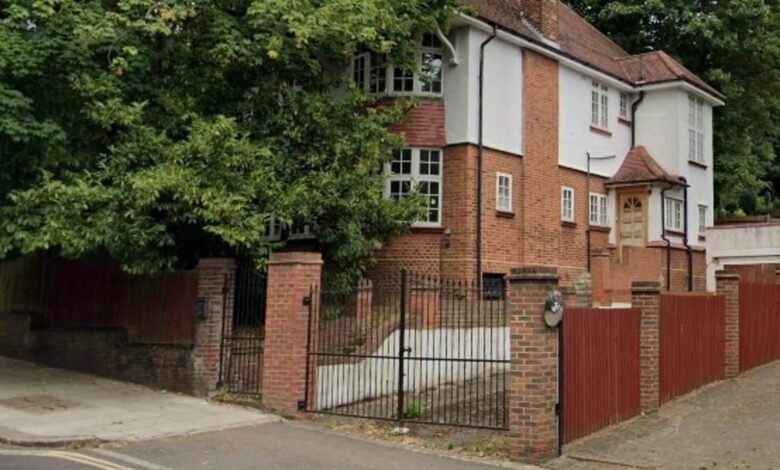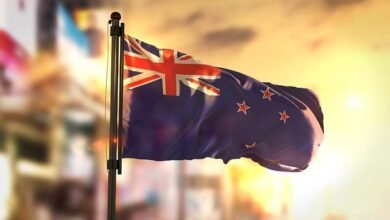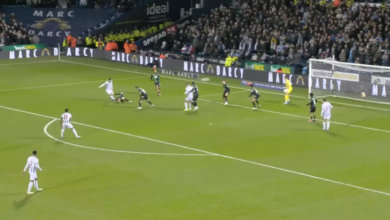The million-pound London properties owned by Putin’s regime, many in a state of disrepair in some of the capital’s most affluent locations

Multi-million-pound homes owned by Russian president Vladimir Putin‘s regime have been revealed across some of London‘s most affluent areas – with many left neglected and in a state of disrepair.
The luxury property portfolio has come under scrutiny amid mounting calls for tougher sanctions which would enable the UK government to seize more British-based Russian assets.
Home Secretary James Cleverly earlier this month closed several buildings used by the Putin regime and promised a cap on the amount of time Russian diplomats can spend in the UK.
The properties suspected of being used as spy bases for Moscow are believed t include the Grade II-listed, 50-room Seacox Heath mansion in Hawkhurst, East Sussex, as well as a trade and defence base in Highgate, north London.
Another 10 Russian-owned buildings in London have also now been identified by the Telegraph, based on HM Land Registry records.
Neighbours have described many of them as having been left vacant for several years and showing signs of neglect and decay.
While many are thought to have been empty for years, others appeared to have Russian-speaking inhabitants, it was reported.
The properties include another two in upmarket Highgate, including one on Highgate West Hill whose value is estimated at £2.4million.
Neighbours told the newspaper that property had been vacant for at least ‘several years’, with one saying she occasionally had to phone the Russian trade delegation requesting they deal with overhanging trees.
She said: ‘Russian people used to live there – when we had perestroika, we had a party.’
Black metal gates at the front were padlocked closed while the home’s path and driveway were overgrown with weeds.
Another Russian-owned property about 80 yards around the corner is believed to be worth about £2.3million, despite white paint peeling from the outside walls and a garden overgrown with long grass and wildflowers.
It is reportedly one of four Russian-owned properties on a private estate.
Click here to resize this module
One neighbour said she had not seen anyone enter or leave the home for the previous 35 years, though another described seeing the nearby Russian trade delegation send someone to cut the front garden’s grass.
In west London, a Grade II-listed redbrick building in Kensington was described as owned by the Russian Federation and with Russian residents ‘from top to down’.
The property with a folk mural painted on a portico leading to the front doors also has two CCTV cameras and a gold plaque labelling the place the ‘permanent mission of the Russian Federation to the international maritime organisation’.
Its value was estimated at £1.5million, based on sales of similar properties in the area, while another Russian-owned property nearby in Holland Park was put at £1.65million – in a district where residents include Sir Elton John and Ed Sheeran.
Earlier this month Mr Cleverly told MPs an ‘undeclared’ Russian military intelligence officer Colonel Maxim Elovik had been posing as Moscow’s defence attaché and had been told to leave the country.
The Home Secretary also shut several buildings used by the Putin regime and promised a cap on the amount of time Russian diplomats can spend in the UK.
The measures were in response to a ‘pattern of alleged Russian malign activity across the UK and Europe’ in a bid to ‘target and dismantle Russian intelligence-gathering operations’, the Home Office said.
Britain has expelled almost a dozen Russian spies since the Salisbury Novichok poisonings in 2018, a botched attempted assassination of ex-Russian military officer and British double agent Sergei Skripal and his daughter Yulia.
Click here to resize this module
And there have recently been allegations Moscow was involved in a suspected arson attack on a Ukrainian aid centre in London.
The new moves came against the backdrop of the ongoing war in Ukraine following Mr Putin’s invasion in February 2022 and amid mounting fears of Russian espionage and sabotage across Europe.
Diplomatic status was removed from buildings such as Seacox Heath, built in 1871 for statesman George Goschen but which has been in Russian hands since 1946.
The 83-acre estate, with tennis courts and a football pitch, was originally intended as a luxury retreat for diplomatic staff.
In 1952 it was described in the Daily Mail as a ‘Russian country club’ and has since been dubbed ‘Putin’s Palace’.
When it emerged the property was an extension of Russia’s London embassy, outraged locals sprayed pro-Ukrainian graffiti on the entrance.
Another key building to lose diplomatic status was the Russian Embassy’s trade and defence section – again in Highgate, in a neighbourhood popular with Russian diplomats and oligarchs.
The measures were calculated to severely dent the Kremlin’s ability to carry out intelligence operations in the UK.
Mr Cleverly described how there had been an escalation in ‘reckless and dangerous activities’ including sabotage, espionage, cyber-attacks, disinformation attacks, air space incursions and GPS jamming.
He told MPs he wanted to send a ‘strong deterrent message’, adding: ‘We should expect accusations of Russophobia, conspiracy theories and hysteria from the Russian government.
‘The British people and the British Government will not fall for it and will not be taken for fools by Putin’s bots, trolls and lackeys.’
Russia has also been accused of recruiting far-Right extremists plotting terror attacks in NATO nations including the UK.
Experts say Mr Putin and his GRU military intelligence office are behind terrorists who have carried out a series of attacks in the West in recent months and are planning more ahead.
Undercover GRU officers and the mercenary group Wagner are believed to be cultivating militants described as ‘pro-Russia, pro-Putin and very violent’.
Source link





